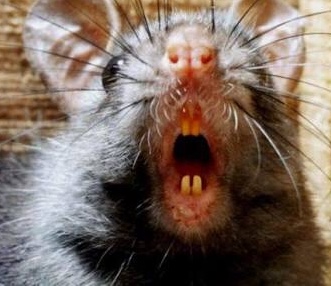 All animal species have an irresistible urge to both feed and procreate. It is the driving force behind all of us. If one of these urges is not fulfilled then species cease to exist. There are many contributing factors that put wildlife at risk, especially in this day and age of environmental uncertainty. When pests are inadvertently introduced into areas where the local animal population has no natural defence against their predation and voracious appetites then those defenceless creatures are doomed. Islands act as natural defence barriers against unwanted intruders but once these walls are breached then local animal populations are decimated to the point of extinction. The common rat is one such intruder which has created havoc wherever it has landed as stowaways on shipping. This highly adaptable rodent not only competes with the local population for food but they eat eggs and young as well. They can climb trees, fall 20 metres without injuring themselves, swim for three days and can survive in adverse conditions where other species would surely perish. They reach plague proportions very quickly, and overrun their competition in sheer numbers. Rats are harmful to humans as well. These pesky rodents carry more than 40 lethal human diseases and have taken more human lives in the last 1000 years than all the causalities of wars and revolutions combined. They feast on new shoots and seedlings, and effectively stop some plants and forests from regenerating. They are a blight on the landscape, and difficult to eradicate. Poisons keep them in check but it is labour intensive work, and costly. Poison baits also kill other animal species, so it's not an ideal solutiion to eradicating rats. Once rats are introduced into an area they are hard to budge, but budge we must.
All animal species have an irresistible urge to both feed and procreate. It is the driving force behind all of us. If one of these urges is not fulfilled then species cease to exist. There are many contributing factors that put wildlife at risk, especially in this day and age of environmental uncertainty. When pests are inadvertently introduced into areas where the local animal population has no natural defence against their predation and voracious appetites then those defenceless creatures are doomed. Islands act as natural defence barriers against unwanted intruders but once these walls are breached then local animal populations are decimated to the point of extinction. The common rat is one such intruder which has created havoc wherever it has landed as stowaways on shipping. This highly adaptable rodent not only competes with the local population for food but they eat eggs and young as well. They can climb trees, fall 20 metres without injuring themselves, swim for three days and can survive in adverse conditions where other species would surely perish. They reach plague proportions very quickly, and overrun their competition in sheer numbers. Rats are harmful to humans as well. These pesky rodents carry more than 40 lethal human diseases and have taken more human lives in the last 1000 years than all the causalities of wars and revolutions combined. They feast on new shoots and seedlings, and effectively stop some plants and forests from regenerating. They are a blight on the landscape, and difficult to eradicate. Poisons keep them in check but it is labour intensive work, and costly. Poison baits also kill other animal species, so it's not an ideal solutiion to eradicating rats. Once rats are introduced into an area they are hard to budge, but budge we must.
Rats must be eradicated
Jens Ward
Words ④ Wildlife